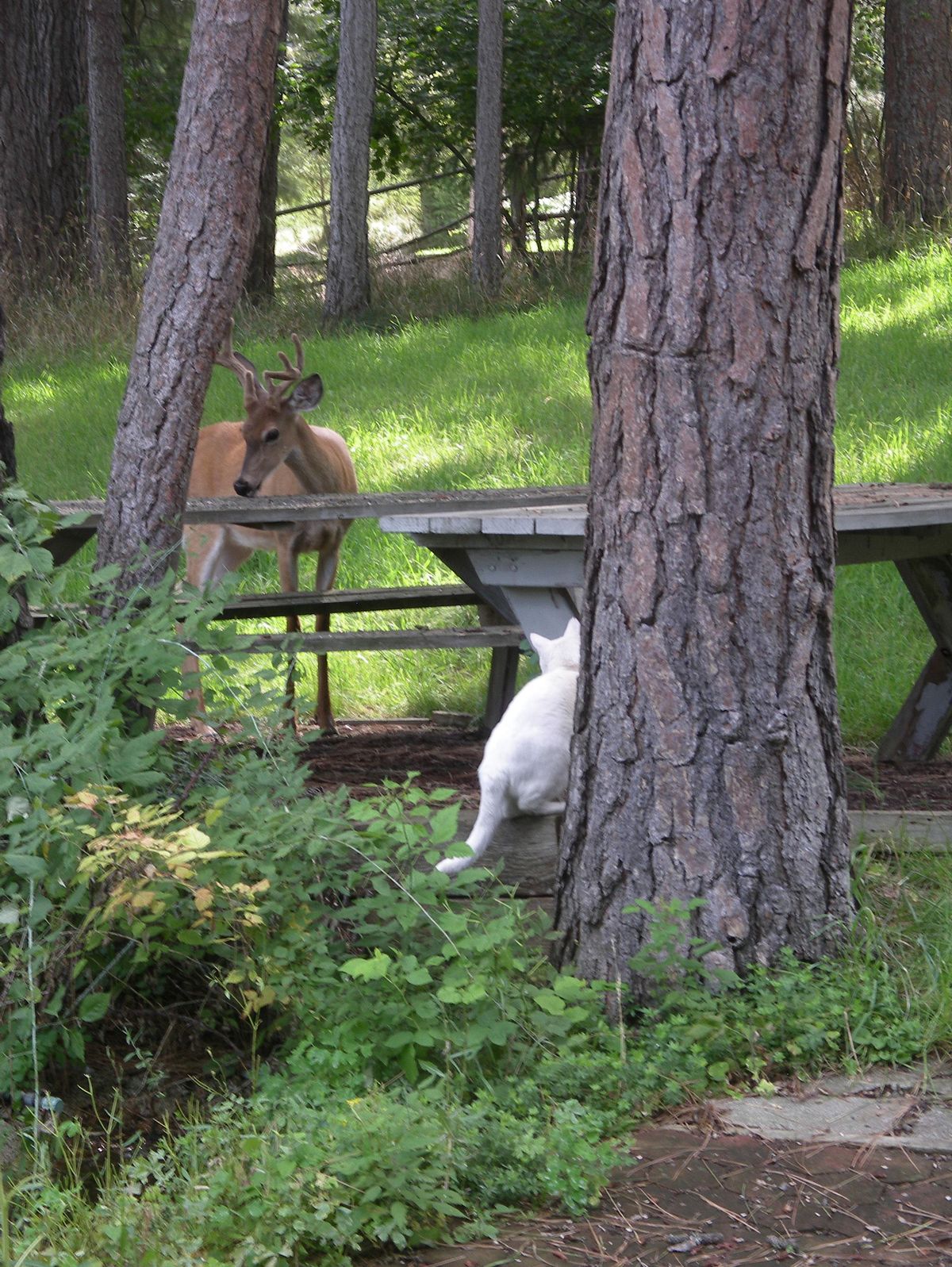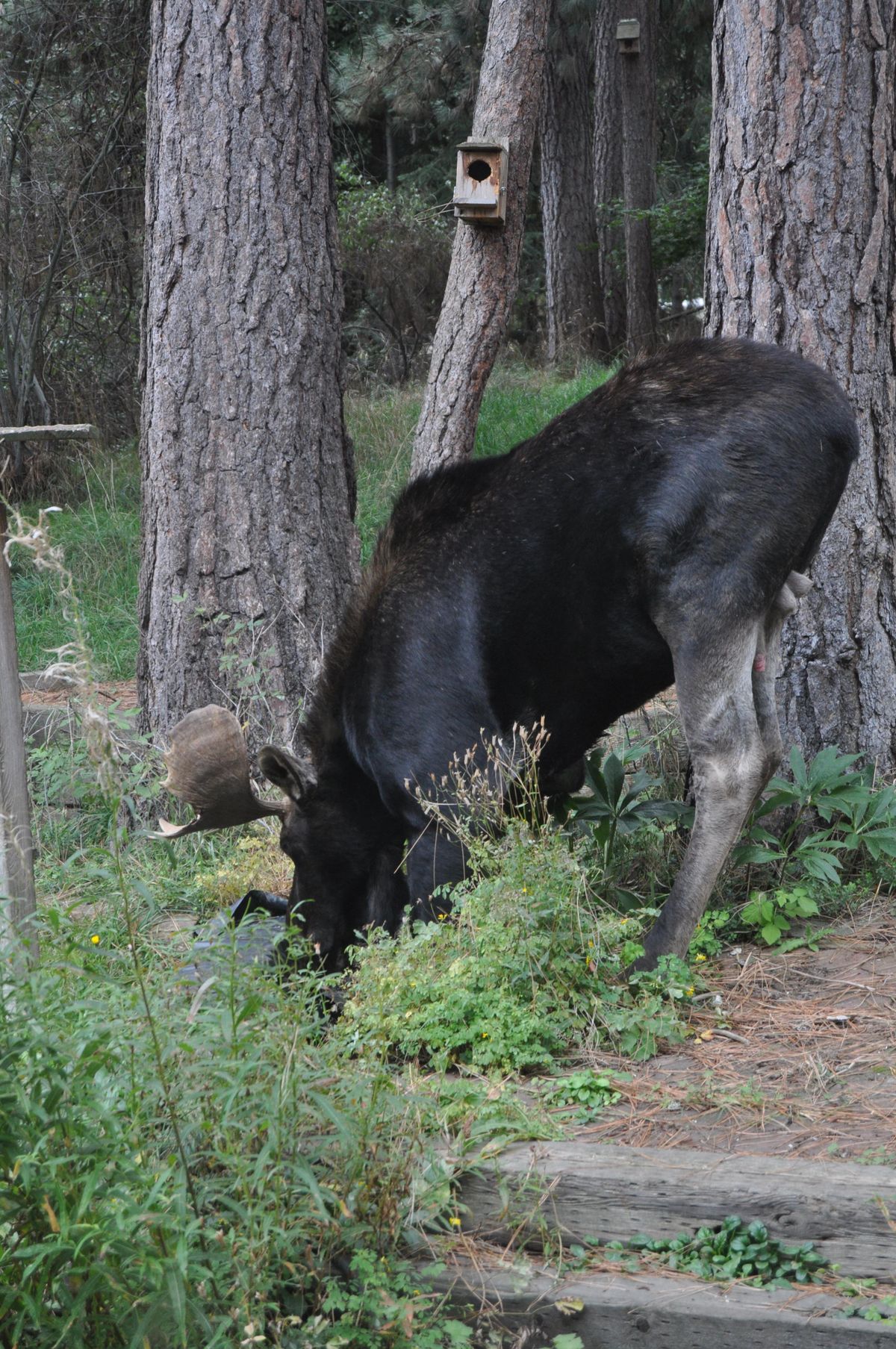Gardening: With basics, your yard can be haven for wildlife
A young buck in velvet enjoys some sunflower seeds left for the birds while Dusty, Pat Munts’ cat, looks on. (Pat Munts / The Spokesman-Review)
We usually have a couple of doe deer who have their babies in our field and the neighboring woods. My husband has seen at least three fawns chasing each other around our backyard. They feel at home here. For the last 15 years, our yard has been part of the Washington Department of Fish and Wildlife’s Backyard Habitat Program.
You don’t need to live in the woods or have lots of space to have a wildlife-friendly garden. Wildlife appreciate a steady supply of food, water and shelter anywhere they can find it, even on urban lots in the middle of the city.
Providing the needed food, water and shelter doesn’t have to be expensive or complicated. To provide shelter for nesting, resting and protection from predators, plant deciduous and evergreen shrubs and trees with differing heights and densities. Use high-quality birdseed like black oil sunflowers if you feed birds. Hummingbird feed is easy to make by dissolving one cup of sugar in four cups of water. Don’t add red food coloring as there is usually enough red on a hummingbird feeder to draw them in. Don’t be too quick to cut down your perennial beds in the fall as the plants still have seeds the birds will eat and the dead foliage makes a good hiding place.
Providing water doesn’t mean you have to build a fancy fountain. A shallow birdbath with gently sloping edges will not only allow birds to drink but also allows insects including bees and butterflies to land and then walk to the water’s edge. For larger animals a ground-level bowl kept full will draw in critters from squirrels to moose for a quick drink. It can be as simple as a depression in the ground filled with a couple of sacks of concrete and fed off a bubbler from the sprinkler system. Our resident Cooper’s hawk even took a bath in ours recently.
The application to be designated as a WDFW Backyard Habitat can be found at the department’s website: https://bit.ly/311mdBy. You will be asked to inventory your property for its food, water and shelter resources and the types of wildlife you commonly see. It also asks about other conservation practices you use on your land like composting and mulching, water conservation, reduction or elimination of pesticide usage, and your usage of native plants. They ask you to sketch a map of your property. The application fee is $10, and you receive a certificate and a weatherproof sign to place in your garden.
Granted, wildlife, especially deer, can be pests – but only if you don’t do a little planning to reduce conflicts. If deer really like your favorite plant, create a fenced garden for it and other “deer candy” plants like hosta and tulips. Use a commercial deer repellent spray regularly on choice plants, especially now as the native foliage begins to dry out. Lastly, be patient. A little nibbling is a small price to pay for sharing our space.

